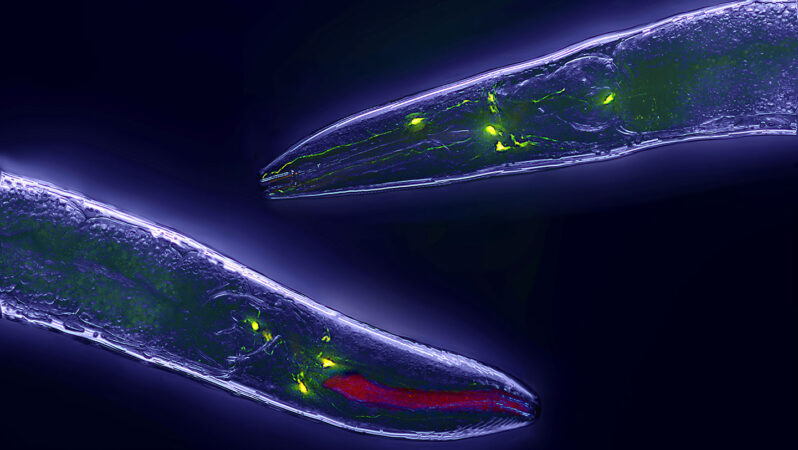
artificial intelligence: A type of knowledge-based decision-making exhibited by machines or computers. The term also refers to the field of study in which scientists try to create machines or computer software capable of intelligent behavior.
attention: The phenomenon of focusing mental resources on a specific object or event.
behavior: The way something, often a person or other organism, acts towards others, or conducts itself.
cell: (in biology) The smallest structural and functional unit of an organism. Typically too small to see with the unaided eye, it consists of a watery fluid surrounded by a membrane or wall. Depending on their size, animals are made of anywhere from thousands to trillions of cells. Most organisms, such as yeasts, molds, bacteria and some algae, are composed of only one cell. (in telecommunications) A technology that relies on a large number of base stations to relay signals. Each base station covers only a small area, which is known as a cell. Phones that rely on this system are typically referred to as cell phones.CEO: An acronym for Chief Executive Officer, which is typically the person who runs a company.
computational: Adjective referring to some process that relies on a computer’s analyses.
computer science: The scientific study of the principles and use of computers. Scientists who work in this field are known as computer scientists.
develop: To emerge or to make come into being, either naturally or through human intervention, such as by manufacturing.
differential equations: An area of math that relates two physical things and their rates of change to each other. For example, a plane wing moving through air on a windy day could be represented by a differential equation.digital: (in computer science and engineering) An adjective indicating that something has been developed numerically on a computer or on some other electronic device, based on a binary system (where all numbers are displayed using a series of only zeros and ones).drone: A remote-controlled, pilotless aircraft or missile.equation: In mathematics, the statement that two quantities are equal. In geometry, equations are often used to determine the shape of a curve or surface.
intelligence: The ability to collect and apply knowledge and skills.
large language model: (in computing) Language models are a type of machine learning. They attempt to predict upcoming words (in text or speech) and then present those predictions using words that almost anyone should understand. The models learn to do this by reviewing large quantities of text or speech. As their name would imply, large language models train using enormous troves of data. They organize and make sense of those data using “neural nets” — a scheme patterned a bit off of the pathways of nerves in the human brain. Large language models don’t just learn words, but also phrases made of many words. They can even learn from the context in which a new phrase and idea is worded (meaning the words that accompany those phrases or in which those phrases have been embedded).model: A simulation of a real-world event (usually using a computer) that has been developed to predict one or more likely outcomes. Or an individual that is meant to display how something would work in or look on others.network: A group of interconnected people or things. (v.) The act of connecting with other people who work in a given area or do similar thing (such as artists, business leaders or medical-support groups), often by going to gatherings where such people would be expected, and then chatting them up. (n. networking)
neural network: Also known as a neural net. A computer program designed to manage lots of data and in complex ways. These systems consist of many (perhaps millions) of simple, densely linked connections within a computer. Each connection, or node, can perform a simple operation. One node might be connected to several feeder nodes, which send it data. Several more nodes in another layer sit ready to accept the newly processed data and act upon them in some other way. The general idea of networks was initially patterned loosely on the way nerve cells work in the brain to process signals that lead to thought and learning.
neuron: The main cell type of the nervous system — the brain, spinal column and nerves. These specialized cells transmit information by producing, receiving and conducting electrical signals. Neurons also can transmit signals to other cells with chemical messengers.
neuroscientist: Someone who studies the structure or function of the brain and other parts of the nervous system.PhD: (also known as a doctorate) A type of advanced degree offered by universities — typically after five or six years of study — for work that creates new knowledge. People qualify to begin this type of graduate study only after having first completed a college degree (a program that typically takes four years of study).
probability: A mathematical calculation or assessment (essentially the chance) of how likely something is to occur.real time: A term that connotes immediacy; something is being studied, recorded and/or reported at the very time it is happeningrecall: To remember.
self-driving car: Also known as a driverless car or autonomous vehicle. These cars pilot themselves based on instructions that have been programmed into their computer guidance system.
synapse: The junction between neurons that transmits chemical and electrical signals.
system: A network of parts that together work to achieve some function. For instance, the blood, vessels and heart are primary components of the human body’s circulatory system. Similarly, trains, platforms, tracks, roadway signals and overpasses are among the potential components of a nation’s railway system. System can even be applied to the processes or ideas that are part of some method or ordered set of procedures for getting a task done.
trait: A characteristic feature of something.
trillion: A number representing a million million — or 1,000,000,000,000 — of something.
